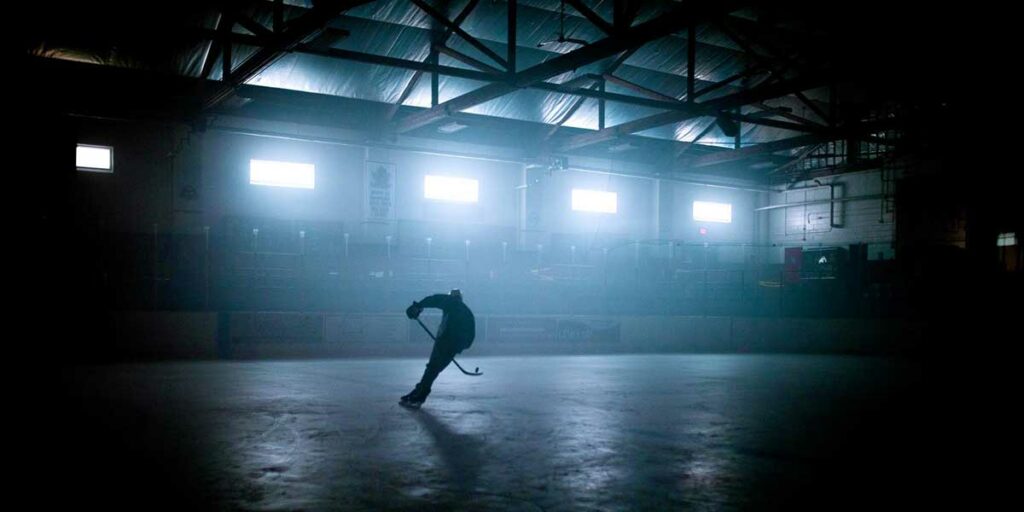Black Ice is a revelatory if unsurprising look at the problematic racial culture of hockey, providing both historical insight and room for improvement.
The story of twentieth-century American sports is in many aspects the story of civil rights and social acceptance. Every sport has some kind of tale of overcoming adversity and prejudice in order to succeed at the professional level. While the story of Jackie Robinson in baseball is well documented, many other black athletes had a rockier path to integration. Black Ice is a documentary about the color barrier in ice hockey, how Black hockey players had to face an uphill battle, and what is being done to address the problems even today. This is not an easy subject, but it is a necessary conversation to have for the growth and survival of the game.
The inspiration for Black Ice came from history. In 2004, Darril and George Fosty documented in a book the history of the Coloured Hockey League of the Maritimes. Formed in 1895 in Nova Scotia and run by local church groups, it attracted over 400 Black players to the game of hockey. These players were forbidden from playing professional hockey due to segregation laws and income inequality. It included many pioneering tactics of the game such as use of the slapshot and allowing the goaltender to drop to his knees to block a shot, which would not be allowed in pro hockey until 1917. The league had many great players and moments, but is lost to history. Many of these players never integrated into the big time, so they are long forgotten, despite being major innovators and a sign of unity for Black Canadians. Their stories deserve to be told, and this documentary is the first step in reclaiming this story.
What makes the film interesting is how it deals with racism from a distinct Canadian perspective. Canada tries hard to separate themselves from the United States, in particular by distancing their history of racism. The sad truth, though, is their history of racism was still present but in a different form. Canada may have abolished slavery sooner and been the finish line for the Underground Railroad, but they still practiced segregation and limited Black Canadian access to certain privileges like sports. Income inequality meant many of them could not afford the gear and training needed to play hockey, leaving them out of the big leagues. It is a miracle some of them were able to break through at all given their lack of exposure to the game and relative poverty, but the important part of this story is that a few of them did. This is why the movie is telling the tale here.

Throughout history, Black players have been important to the game, but many are overshadowed in their accomplishments by society. One such story is the tragic tale of Herb Carnegie. The son of Jamaican immigrants, Carnegie was fast, accurate in his shots, and a good assist man playing center. He was offered the opportunity to play for the Toronto Young Rangers in 1938, but was forbidden from playing in the National Hockey League (NHL) due to the color of his skin. Toronto Maple Leafs owner Conn Smythe infamously remarked he would only sign Carnegie if he were given $10,000 to make him white, which locked a great player from his full potential. Carnegie still worked as a trainer and builder of the game, founding the prominent Future Aces training school. In 2022, Carnegie was at last inducted into the Hockey Hall of Fame, a decade after his death. Such a legacy seems undeserving of a great and determined player.
Today, twenty-six players in the NHL are Black, with twenty coming from Canada. While the game has grown and diversified, with particular interest coming from Europe, internally it still struggles to attract non-white players. Many problems such as income inequality and being confined to the ghettos still limit black players’ access to the sport. A handful have found success, and while Montreal Canadiens center P. K. Subban found success and won a few awards, many fans did still direct slurs at him and make him feel alienated. The NHL’s diversity council was established to combat this behavior, and is doing the best they can to build an environment of inclusivity within hockey. If the sport is to be more open, it must start with the audience.
While well-intentioned, Black Ice feels a bit incomplete. So much can be learned about the racial history of hockey, it feels like the topic is too dense for just one movie. Over a hundred years of history cannot be condensed into ninety-seven minutes, so much gets glossed over. Recent draftees tell their stories and many superstar players like P. K. Subban and Willie O’Ree tell their stories, but it is only a fraction of what can be displayed. A particular emphasis could be played on how the game has grown south of the border, as the black community in America is slowly adapting to hockey. In one specific example, when Devante Smith-Pelly won the Stanley Cup with the Washington Capitals in 2018, the predominantly black neighborhoods of Washington, DC found their hero, inspiring more kids to take up the sport. These stories and more could have made for a fine miniseries if allowed to expand beyond one feature film.
On a technical, filmmaking level, Black Ice follows the bare minimum for a successful documentary. As a persuasive piece, Black Ice succeeds at what it tries to tell. It uncovers a nearly lost part of the story of hockey and highlights both the good and the bad of racial attitudes within the game today. Things have gotten better, but there is still much work to be done.
Roadside Attractions will release Black Ice exclusively in AMC Theaters nationwide on July 14, 2023.

